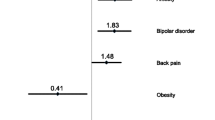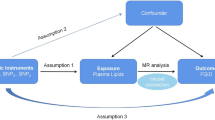Abstract
Mild mitral valve prolapse, hypoglycemia, irritable colon, and premenstrual syndrome are examples of anatomicophysiologic phenomena that largely overlap with normal. Such “overlap syndromes” become labeled disease entities by the medical community through a process called medicalization. This report uses mitral valve prolapse (MVP) to exemplify the effects of medicalization on patients, physicians, and society. Ascertainment bias and insufficient controlled clinical studies have led to the description of a clinical entity replete with false associations (e.g., mitral valve prolapse syndrome) and overly pessimistic prognostication (e.g., risk of sudden death or endocarditis), leading to clinical overreaction, overtreatment, and unnecessary induction of disability. Though some physical complications may be prevented by recognizing severe MVP, there is substantial risk of iatrogenic harm by attributing complex symptoms and illness behavior to mild MVP, which is probably a normal variant. A three-dimensional analysis of illness experience is presented that may be of use in conceptualizing the clinical approach to overlap syndromes such as mild MVP. Conservative criteria for the diagnosis of significant MVP have been developed at the National Institutes of Health. Treatment of patients with mild MVP must emphasize that it is a normal variant without serious consequences. Because the risks of overmedicalization are so substantial, the impact of diagnostic labels on individual patients and society must be analyzed continually.
Similar content being viewed by others
References
Barlow JB, Bosman CK. Aneurysmal protrusion of the posterior leaf-let of the mitral valve. Am Heart J 71:166–78, 1966
Ross A, DeWeese JA, Yu PN. Refractory ventricular arrhythmias in a patient with mitral valve prolapse: successful control with mitral valve replacement. J Electrocardiol 1978;11:289–95
Devereux RB, Perloff JK, Reichek N, Josephson ME. Mitral valve prolapse. Circulation 1976;54:3–14
Shrivastava S, Guthrie RB, Edwards JE. Prolapse of the mitral valve. Mod Concepts Cardiovasc Dis 1977;46:57–61
Perloff JK. Evolving concepts of mitral valve prolapse (editorial). N Engl J Med 1982;307:369–70
Leatham A, Brigden W. Mild mitral regurgitation and the mitral prolapse fiasco. Am Heart J 1980;99:659–64
Fontana ME, Pence HL, Leighton RF, et al. The varying clinical spectrum of the systolic click in late systolic murmur syndrome. Circulation 1970;41:807–16
Perloff JK, Child JS, Edwards JE. New guidelines for the clinical diagnosis of MVP. Am J Cardiol 1986;57:1124–9
Levine RA, Weyman AE. MVP: a disease in search of, or created by, its definition. Echocardiography 1984;1:3–12
DeMaria AN, King JF, Bogren HG, et al. The variable spectrum of echocardiographic manifestations of MVP syndrome. Circulation 1971;50:33–41
Barlow JB, Pocock WA. The mitral valve prolapse enigma: two decades later. Mod Concepts Cardiovasc Dis 1984;53:13–17
Alpert MA, Carney RJ, Flaker GC, et al. Sensitivity and specificity of two-dimensional echocardiographic signs of mitral valve prolapse. Am J Cardiol 1984;54:792–6
Alpert MA, Carney RJ, Munuswamy K, et al. Observer variation in the echocardiographic diagnosis of mitral valve prolapse. Am Heart J 1986;111:1123–9
Jeresaty RM. Mitral valve prolapse—an update. JAMA 1985;254:7935
Jeresaty RM. Mitral valve prolapse. New York: Raven Press, 1979
Devereux RB, Perloff JK, Reichek N, Josephson ME: Mitral valve prolapse. Circulation 1976;54:3–14
O’Rourke RA, Crawford MH, Johnson AD, et al. Prolapsing mitral valve leaflet syndrome. West J Med 1975;122:217–31
Jeresaty RM. Mitral valve prolapse—click syndrome. Progr Cardiovasc Dis 1973;15:623–52
Clinical and epidemiological issues in mitral valve prolapse. Proceedings of a National Heart, Lung and Blood Institute Symposium. Am Heart J May 1987:1265–332
Procacci PM, Savran SV, Schreiter SL. Prevalence of clinical mitral valve prolapse in 1169 young women. N Engl J Med 1976;294:1086–8
Markiewicz W, Stoner J, London E, et al. Mitral valve prolapse in 100 presumably healthy young females. Circulation 1976;53:464
Brown OR, Kloster FE, DeMots H. Incidence of mitral valve prolapse in the asymptomatic normal. Circulation 1975;52, suppl 2:77
Higgins CB, Reinke RT, Gosink BB, Leopold GR. Significance of mitral valve prolapse in middle-aged and elderly men. Am Heart J 1976;91:292–6
Cheitlin MD, Byrd RC. The click-murmur syndrome: a clinical problem in diagnosis and treatment. JAMA 1981;245:1357–61
Barlow JB, Bosman CK, Pocock WA, et al. Late systolic murmurs and nonejection (“mid-late”) systolic clicks. Br Heart J 1968;30:203–18
Snyder DW. MVP: recognizing and treating its manifestations and complications. Postgrad Med Apr 1985;77:281–8
Nagger CZ. The mitral valve prolapse syndrome: spectrum and therapy. Med Clin North Am 1979;63:337–53
Pariser SF, Pinta ET, Jones BA. Mitral valve prolapse syndrome and anxiety neurosis/panic disorder. Am J Psychiatr 1978;135:246–7
Spears PF, Koch KL, Day FP. Chest pain associated with mitral valve prolapse: evidence for esophageal origin. Arch Intern Med 1986;146:796–7
Wooley CF. The mitral valve prolapse syndrome. Hosp Pract June 1983;163–74
Hancock EW. Is there mitral valve prolapse syndrome? Int J Cardiol 1982;1:433–44
Shear MK, Devereux RB, Kramer-Fox R, et al. Low prevalence of mitral valve prolapse in patients with panic disorder. Am J Psychiatr 1984;141:302–3
Uretsky BF. Does mitral valve prolapse cause nonspecific symptoms. Int J Cardiol 1982;1:435–42
Alpert JS. Association between arrhythmias and mitral valve prolapse (editorial). Arch Intern Med 1984;144:2333–4
White KL, Williams TF, Greenberg BG. The ecology of medical care. N Engl J Med 1961;265:885–92
Burnham JF. What one internist does in his practice: implications for the internist’s disputed role and education. Ann Intern Med 1973;78:437–44
Motulsky AG. Biased ascertainment and the natural history of diseases. N Engl J Med 1978;298:1196–7
Mechanic D. Social psychological factors affecting the presentation of bodily complaints. N Engl J Med 1972;286:1132–9
Mechanic D. The concept of illness behavior. J Chronic Dis 1961;15:189–94
DeVries NW, Berg RL, Lipkin M Jr. The use and abuse of medicine. New York: Praeger:1982:296
Benton DC, Brear SG, Edwards JD, Leonard JC. Mitral valve prolapse: an assessment of clinical features, associated conditions, and prognosis. Q J Med new series LII, spring 1983;206:150–64
Nishimura RA, McGoon MC, Shub C. Echocardiographically documented mitral valve prolapse—long-term followup of 237 patients. N Engl J Med 1985 313:1305–9
Savage DD, Garrison RJ, Devereux RB, et al. Mitral valve prolapse in the general population: 1. Epidemiological features, 2. Clinical features, 3. Dysrhythmias: the Framingham Study. Am Heart J 1983;106:571–86
Kramer HM, Kligfield P, Devereux RB, et al. Arrhythmias in mitral valve prolapse—effect of selection bias. Arch Intern Med 1984;144:2360–4
Retchin SM, Fletcher RH, Earp J, et al. Mitral valve prolapse: disease or illness? Arch Intern Med 1986;146:1081–4
Hartman N, Kramer R, Brown WT, et al. Panic disorder in patients with mitral valve prolapse. Am J Psychiatr 1982;139:669–70
Gorman JM, Shear MK, Devereux RB. Prevalence of mitral valve prolapse in panic disorder: effect of echocardiographic criteria. Psychosomat Med 1986;48:167–71
Seven BH. Mitral valve prolapse, panic states and anxiety. A dilemma in perspective. Psychiatr Clin North Am 1987;10:141–50
Barzilay J, Froom P, Gross M, et al. Exercise testing and physical fitness in mitral valve prolapse. J Cardiopulmonary Rehabil 1986;6:465–68
Chesler E, Weir EK, Braatz GA, et al. Normal catecholamine and hemodynamic responses to orthostatic tilt in subjects with mitral valve prolapse. Am J Med 1985;78:754–60
Devereux RB, Brown WT, Kramer-Fox T, et al. Inheritance of mitral valve prolapse: effect of age and sex on gene expression. Ann Intern Med 1982;97:826–32
Waller BF, Morrow AC, Maran BJ, et al. Etiology of clinically isolated, severe, chronic, pure mitral regurgitation: analysis of 97 patients over 30 years of age having mitral valve replacement. Am Heart J 1982;104:276–88
Beton DC, Brear SG, Edwards JD, et al. Mitral valve prolapse: clinical features, associated conditions and prognosis. Q J Med 1983;52:150–64
Jeresaty RM, Edwards JE, Chawla SK. Mitral valve prolapse and ruptured chordae tendineae. Am Heart J 1985;55:138–42
Goodman D, Kimbiris D, Linhart JW. Chordae tendineae rupture complicating the systolic click-late systolic murmur syndrome. Am J Cardiol 1974;33:681–4
Barnett HJM, Boughner DR, Tayler DW, et al. Further evidence relating mitral valve prolapse to cerebral ischemic events. N Engl J Med 1980:302:139–44
Winkle RA, Lopes MG, Popp RL, Hancock EW. Life-threatening arrhythmias in the mitral valve prolapse syndrome. Am J Med 1976;60:961–7
DeMaria AN, Amsterdam EA, Vismara LA, et al. Arrhythmias in the mitral valve prolapse syndrome. Ann Intern Med 1976;84:656–60
Pocock WA, Bosman CK, Chesler E, et al. Sudden death in primary mitral valve prolapse. Am Heart J 1984;107:378–82
Jeresaty RM. Sudden death in the mitral valve prolapse-click syndrome. Am J Cardiol 1976;37:317–8
Baddour LM, Bisno AL. Infective endocarditis complicating mitral valve prolapse: epidemiologic, clinical, and microbiologic aspects. Rev Infect Dis 1986;8:117–37
Bor DH, Himmelstein DU. Endocarditis prophylaxis for patients with mitral valve prolapse. Am J Med 1984;76:711–7
Hickey AJ, MacMahon SW, Wilcken DE. Mitral valve prolapse and bacterial endocarditis: when is antibiotic prophylaxis necessary? Am Heart J 1985;109:431–5
Retchin SM, Fletcher RH, Beuscher PC, et al. The application of official policy: prophylaxis recommendations for patients with mitral valve prolapse. Med Care 1985;23:1156–62
Shontz FC. The psychological aspects of physical illness and disability. New York: MacMillan, 1975
Ford CV. The somatizing disorders—illness as a way of life. New York: Elsevier Scientific Publishing, 1983
Kaplan C, Lipkin MJ, Gordon G. Somatization in primary care: patients with unexplained and vexing medical complaints. J Gen Intern Med 1988;3:177–90
Jencks SF. Recognition of mental distress and diagnosis of mental disorder in primary care. JAMA 1985;253:1903–7
Quill TE. Somatization disorder: one of medicine’s blind spots. JAMA 1985;254:3075–9
Illich I. Medical nemesis. New York: Bantam Books, 1976
Mold JW, Stein HF. The cascade effect in the clinical care of patients. N Engl J Med 1986;314:512–4
Goldberg D. Detection and assessment of emotional disorders in a primary care setting. Int J Ment Health 1979;8:30–48
Engel GL. Conversion symptoms. In: MacBryde CM, Bachlow RS, eds. Signs and symptoms. Ed 6. Philadelphia, J. B. Lippincott, 1980;623–46
Lazare A. Conversion symptoms. N Engl J Med 1981;13:745–8
Barsky AJ III. Patients who amplify bodily sensations. Ann Intern Med 1979;91:63–70
Hurst JW. Words—good and bad. Am J Cardiol 1984;54:444–5
Sox HC, Margulies I, Sox CH. Psychologically mediated effects of diagnostic tests. Ann Intern Med 1981;95:680–5
Abinader EG. The effect of beta blockade on the abnormal exercise test in patients with mitral valve prolapse. J Cardiac Rehabil 1984;4:95–100
Kathol RG, Noyes R, Slyman D, et al. Propranolol in chronic anxiety disorders. Arch Gen Psychiat 1980;37:1361–5
Frishman WH. Razin A, Swencionis C, Sonnenblick EH. Beta-adrenoceptor blockade in anxiety states: a new approach to therapy? Cardiovasc Rev Rep 1981;2:447–59
Heiser JF, DeFrancisco D. The treatment of pathological panic states with propranolol. Am J Psychiatr 1976;133:1389–94
Lipkin M Jr. Psychiatry and medicine. In: Kaplan HI, Sadock BI, eds. Comprehensive textbook of psychiatry. 5th ed. Baltimore: Williams and Wilkins (in press, 1989)
Minter RE, Kimball CP. Life events and illness onset: a review. Psychosomatics 1978;19:334–9
Holmes TH. Life situations, emotions, and disease. Psychosomatics 1978;19:747–54
Author information
Authors and Affiliations
Rights and permissions
About this article
Cite this article
Quill, T.E., Lipkin, M. & Greenland, P. The medicalization of normal variants. J Gen Intern Med 3, 267–276 (1988). https://doi.org/10.1007/BF02596343
Issue Date:
DOI: https://doi.org/10.1007/BF02596343




